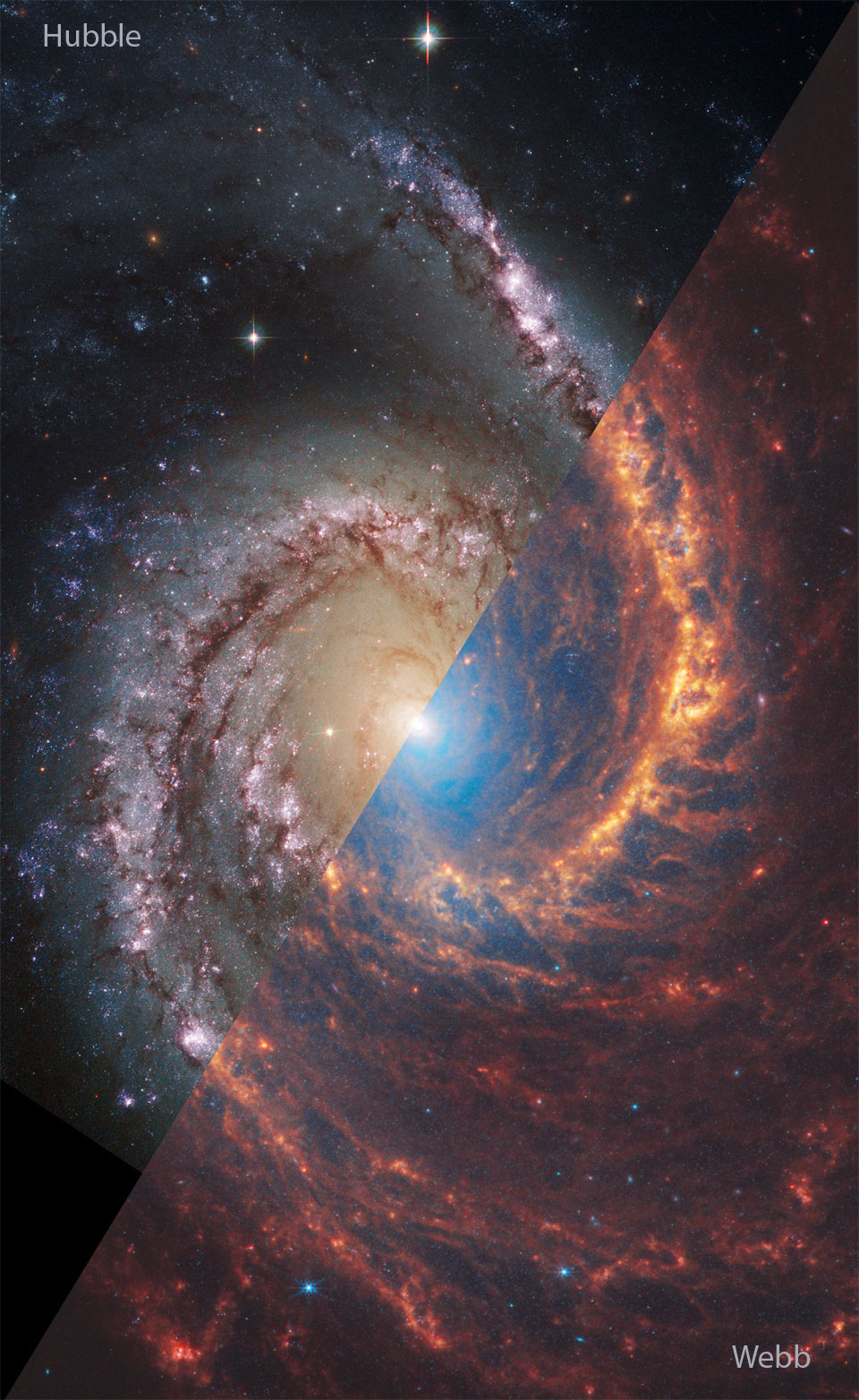NGC 1566 :來自韋伯和哈勃的螺旋星系
NGC 1566: A Spiral Galaxy from Webb and Hubble

來源:NASA,
ESA,
CSA,
STScI,
J. Lee (STScI),
T. Williams (Oxford),
R. Chandar (UToledo),
D. Calzetti (UMass),
PHANGS Team|發表日期:2024-02-06
這個星系有什麼與眾不同之處?幾乎沒有,這使得西班牙舞者星系(NGC 1566 )成為天空中最典型、最上鏡的螺旋星系之一。不過,這個星系的影像還是有些與眾不同,因為它是由兩幅影像對角組合而成的:一幅是左上方由哈勃太空望遠鏡拍攝的影像,另一幅是右下方由詹姆斯-韋伯太空望遠鏡拍攝的影像。 哈勃的影像是用紫外線拍攝的,突出顯示了銀河系令人印象深刻的旋臂上明亮的藍色恆星和暗色塵埃的位置。相比之下,韋伯望遠鏡的影像是用紅外線拍攝的,突出顯示了同樣的塵埃發出的光多於吸收的光的位置。在翻轉影像中,這兩幅影像的另外兩面也被展現出來。兩幅影像之間的閃爍顯示出哪些恆星特別熱,因為它們在紫外線下發出的光更亮,以及看似空無一物的空間和發出紅外線的塵埃之間的區別。 影像緊縮機會: 參加美國國家航空航天局的天體攝影挑戰賽
原文:What's different about this galaxy? Very little, which makes the Spanish Dancer galaxy, NGC 1566, one of the most typical and photogenic spirals on the sky. There is something different about this galaxy image, though, because it is a diagonal combination of two images: one by the Hubble Space Telescope on the upper left, and the other by the James Webb Space Telescope on the lower right. The Hubble image was taken in ultraviolet light and highlights the locations of bright blue stars and dark dust along the galaxy's impressive spiral arms. In contrast, the Webb image was taken in infrared light and highlights where the same dust emits more light than it absorbed. In the rollover image, the other two sides of these images are revealed. Blinking between the two images shows which stars are particularly hot because they glow brighter in ultraviolet light, and the difference between seemingly empty space and infrared-glowing dust. Image Crunching Opportunity: Take NASA's Astrophoto Challenge
※ 本文由萌芽機器人自動轉貼自每日一天文圖(Astronomy Picture of the Day,APOD),原文為英文,正體中文是透過 DeepL 翻譯及 OpenCC 進行自動處理,內容僅供參考,若有任何錯誤之處還請見諒!
關於每日一天文圖:每日一天文圖網站是美國國家航空暨太空總署與密西根理工大學提供的服務,網站每天提供一張影像或圖片,並由天文學家撰寫扼要說明其特別之處。